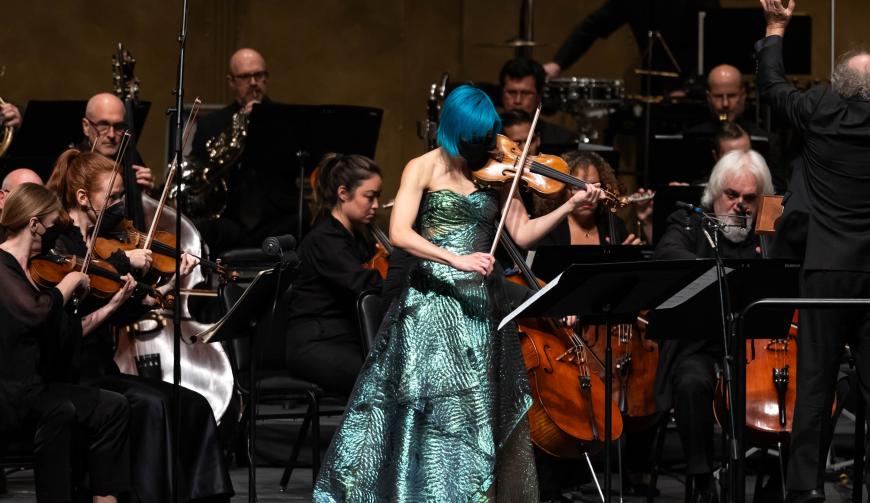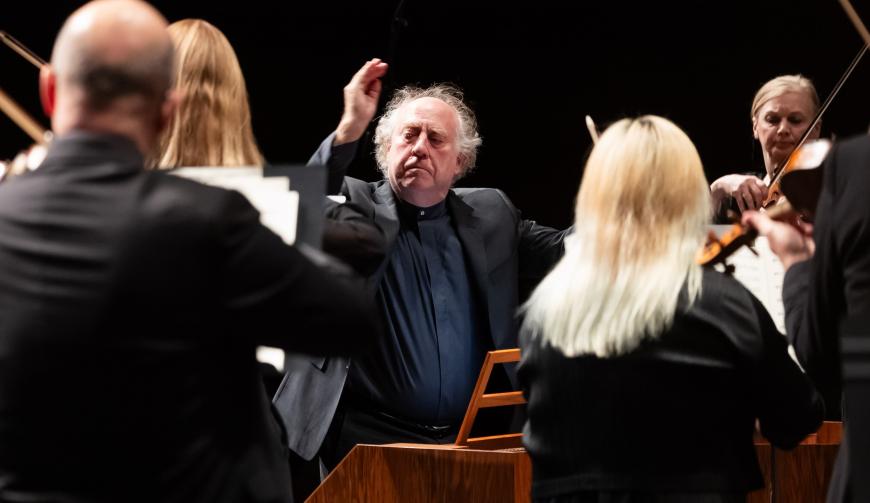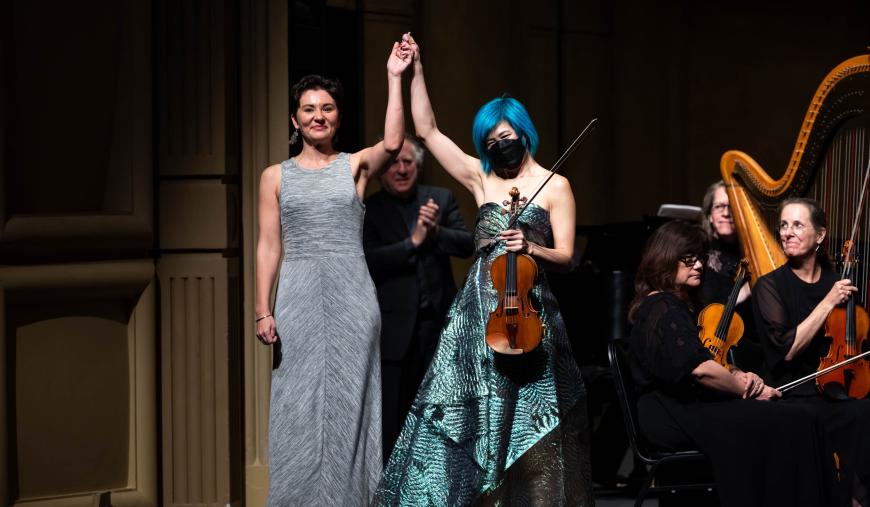
In 1997, when Jeffrey Kahane assumed the post of music director of Los Angeles Chamber Orchestra, he noted (to his dismay) that over the course of the entire season, there was only one contemporary composition scheduled to be played. That would not do — not for a graduate of the San Francisco Conservatory of Music who was well aware of the era-changing music being created by composers like Terry Riley, Steve Reich, Philip Glass, and John Adams.
But when Kahane made his first (exceedingly modest) attempt to change the orchestra’s direction by substituting Aaron Copland’s 1948 Clarinet Concerto for a piece from the 19th-century repertory, it provoked a tempest of hate mail. Subscribers accused Kahane of being, god forbid, “a champion of new music.”
That was throwing down the gauntlet. Over the course of his subsequent 20 seasons as music director, Kahane transformed LACO into a force for the presentation and commissioning of works by living composers.
On Sunday at UCLA’s Royce Hall (as part of the California Festival), Kahane returned to the podium as LACO’s conductor laureate to extend his legacy. He led the second of two performances premiering Nina C. Young’s kaleidoscopic violin concerto Traces, with Jennifer Koh as the soloist.

Kahane opened the concert conducting from the fortepiano in a performance of C.P.E. Bach’s Symphony in D Major and bookended it with a resounding interpretation of Felix Mendelssohn’s Symphony No. 3 in A Minor (“Scottish”). Orchestra and conductor performed at the highest level, comfortable to be back with one another.
It may have been the aquamarine color of Koh’s hair, combined with the shimmering sea-green gown she wore, but from the opening Middle Eastern-tinged phrases of Traces, the rhapsodic violin writing and richly textured orchestration transported me on a journey reminiscent of Nikolai Rimsky-Korsakov’s Scheherazade.
As Young explained prior to the performance, she does not compose in a linear manner, rather in sectional patterns which ultimately flow together, dissolve, create halos, and reform. She also described how the concerto evolved from conversations with Koh (they live six floors apart in the same New York apartment house) regarding the role of the soloist in relationship to the combined and individual voices of the orchestra. And since this all happened during the pandemic, they had plenty of time to talk.
As a result, Traces, co-commissioned by LACO and The Philadelphia Orchestra, is a masterful panorama of expression. Passages requiring the highest degree of violin virtuosity abound, combined with brief concerto grosso-like dialogues between the soloist and a spectrum of section players. Then, all come together to create surging waves of orchestral magnitude.

Young frontloads the concerto with a first movement that is longer than the following two combined. And like the tales of Scheherazade, the opening movement unfurls as a coloristic travelogue, detailed with narrative impressions, orchestral washes, evocative interplay, and bravura violin solos.
The brief second movement Young describes as “a stretched and smeared version of Sibelius’s Violin Concerto.” It has the fleeting effect of a gauze-like cloud passing before the moon.
The tempo accelerates in the final movement, with hints of minimalism as seasoning. Here, Koh had the opportunity to display the full range of her ample technique and interpretive skills — from tempos requiring feverish bowing to languid legato lines and high harmonics that hung in the air like luminous crystal.
Young, who is on the faculty at USC’s Thornton School of Music, is described on her homepage as possessing a style that combines “elements of the classical canon, modernism, spectralism, American experimentalism, minimalism, electronic music, and popular idioms.”
So, though her roots are on the East Coast, her spirit is definitely Californian.




